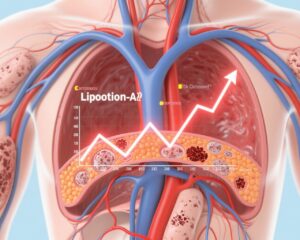Study Background and Disease Burden
Interpersonal violence represents a pervasive public health concern worldwide, disproportionately affecting women. Among various forms of violence, stalking is notable for its high prevalence, with nearly one-third of women experiencing it during their lifetime. This form of persistent harassment can result in psychological distress, physical harm, and substantial disruption to daily life. Restraining orders, legal instruments used to protect individuals from severe stalking or interpersonal violence, reflect cases typically involving heightened risk or severity. While the psychological consequences of stalking have been extensively documented, less is understood about its impact on physical health, particularly cardiovascular disease (CVD).
Cardiovascular disease remains the leading cause of morbidity and mortality globally, with substantial disease burden in women. Traditional risk factors for CVD include hypertension, diabetes, smoking, and dyslipidemia. Increasingly, psychosocial stressors and trauma-related exposures, such as intimate partner violence, have been recognized as influential contributors to CVD risk. The physiological mechanisms linking trauma and cardiovascular health likely involve chronic systemic inflammation, dysregulation of the autonomic nervous system, hormonal imbalances, and adverse health behaviors. Yet, the specific relationship between stalking—with or without the intervention of obtaining a restraining order—and long-term cardiovascular outcomes has not been well characterized prior to this study.
Study Design
The investigation utilized data from the Nurses’ Health Study II, a large, prospective cohort comprising primarily female registered nurses across the United States. Starting in 2001, the exposure status—whether participants had experienced stalking or had obtained a restraining order—was ascertained among 66,270 women free of cardiovascular disease at baseline. The cohort was followed longitudinally for up to 20 years, through 2021, with incident cardiovascular events recorded.
Cardiovascular outcomes included self-reported myocardial infarction (heart attack) and stroke, which were further validated by medical record review for confirmed or corroborated cases. Cox proportional hazards regression models estimated hazard ratios (HRs) for incident CVD linked to stalking and restraining order status, adjusting for confounding factors such as sociodemographic variables, childhood factors, health behaviors, medication use, comorbid health conditions, childhood abuse history, and depressive symptoms. Separate analyses evaluated stroke and myocardial infarction independently.
Key Findings
The mean age of participants at baseline was approximately 46 years. Of those studied, 11.7% (7,721 women) reported experiencing stalking, and 5.6% (3,686 women) reported having obtained a restraining order, indicating exposure to more severe stalking or violence.
During the median follow-up of 19.9 years, 1,879 women (2.8%) developed new-onset cardiovascular disease. After adjusting for sociodemographic and childhood family factors, experiencing stalking was associated with a 41% increased risk of incident CVD (HR 1.41; 95% CI, 1.24–1.60). Obtaining a restraining order conferred an even higher risk, with a 70% increased hazard (HR 1.70; 95% CI, 1.44–1.98).
The associations persisted when myocardial infarction and stroke outcomes were analyzed separately, as well as when only confirmed or corroborated cases were considered. Adjustment for potentially mediating factors, including health behaviors (e.g., smoking, physical activity), medication use, comorbidities, childhood abuse, and depressive symptoms, slightly attenuated these estimates but did not eliminate statistical significance.
These results were robust and suggest a consistent link between interpersonal violence, particularly stalking and legal protective measures, and elevated cardiovascular risk independent of traditional risk factors and psychological comorbidities.
Expert Commentary
This study represents a pivotal advancement in understanding how non-physical forms of interpersonal violence may contribute significantly to cardiovascular pathology. The prospective design, large cohort, and long follow-up enhance the validity and generalizability of findings. Importantly, the use of restraining order status as a proxy for violent severity adds nuance not commonly addressed in prior research on interpersonal trauma and CVD.
Mechanistically, chronic psychological stress induced by stalking could activate sustained neuroendocrine and inflammatory pathways, increasing atherosclerotic disease progression and precipitating acute events. The persistence of associations after accounting for depressive symptoms underscores that the physiological impact of trauma may extend beyond overt mood disorders.
Limitations include reliance on self-reported stalking and cardiovascular outcomes, although medical record validation mitigates concerns. Potential residual confounding by unmeasured variables cannot be excluded. The cohort’s predominance of nurses may limit extrapolation to other populations without additional studies.
Clinicians should recognize stalking as an important psychosocial risk marker for cardiovascular disease in women and consider integrating screening and trauma-informed care approaches within cardiovascular risk assessment frameworks. Multidisciplinary strategies involving mental health support and legal advocacy may enhance cardiovascular health outcomes in this high-risk group.
Conclusion
In summary, the Nurses’ Health Study II analysis furnishes compelling evidence that stalking and obtaining restraining orders are associated with a substantial increase in cardiovascular disease risk among women. These findings highlight the need to broaden cardiovascular risk models to include interpersonal violence exposures alongside traditional factors. Public health initiatives and clinical practice should address the pervasive impacts of violence on women’s health through comprehensive prevention, screening, and support interventions. Future research should explore biological mediators, intervention efficacy, and the role of sociocultural determinants in moderating this risk.
References
1. Lawn RB, Murchland AR, Thurston RC, Marquez C, Jakubowski K, Sampson L, Sumner JA, Kubzansky LD, Koenen KC. Experiences of Stalking and Obtaining a Restraining Order Are Associated With Onset of Cardiovascular Events in Women: A Prospective Analysis in the Nurses’ Health Study II. Circulation. 2025 Sep 2;152(9):570-581. doi: 10.1161/CIRCULATIONAHA.124.073592. Epub 2025 Aug 11. PMID: 40785542; PMCID: PMC12342650.
2. Coughlin SS. Post-traumatic stress disorder and cardiovascular disease. Open Cardiovasc Med J. 2011;5:164-170. doi:10.2174/1874192401105010164
3. Black MC, Basile KC, Breiding MJ, et al. The National Intimate Partner and Sexual Violence Survey (NISVS): 2010 Summary Report. National Center for Injury Prevention and Control; 2011.
4. Kravitz HM, Zikmund-Fisher BJ, Nielson CM, et al. Mechanisms linking interpersonal violence and cardiovascular disease: A systematic review and meta-analysis. Psychoneuroendocrinology. 2023;150:105878. doi:10.1016/j.psyneuen.2023.105878


